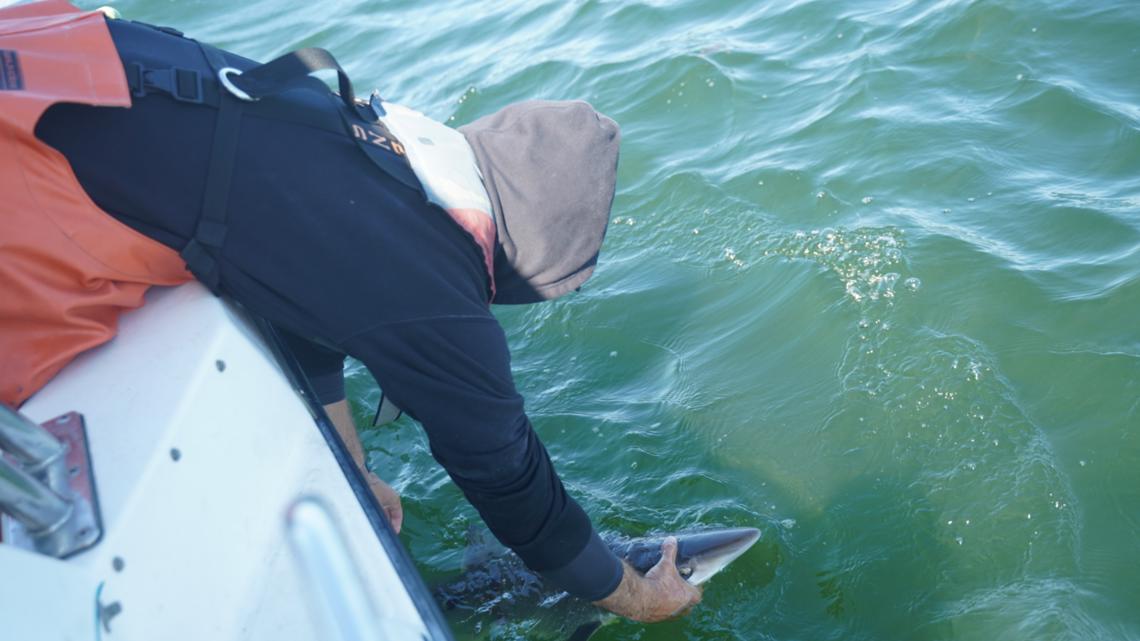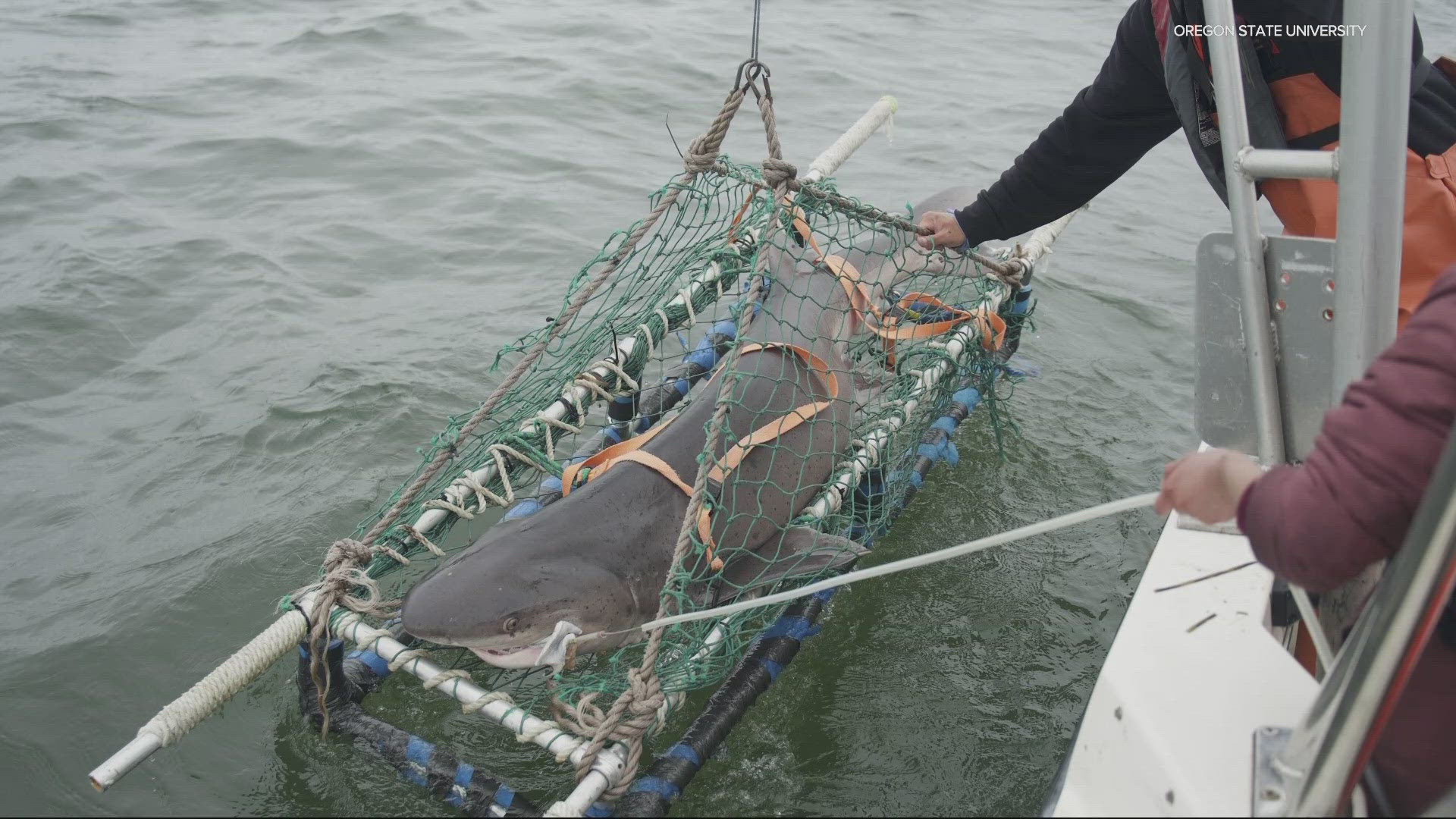OLYMPIA, Wash — Oregon State University researchers made the scientific confirmation of two shark species previously undocumented in the Puget Sound: the broadnose sevengill shark and the critically endangered soupfin shark.
There were always rumors these sharks were in Puget Sound, and they became something of an urban legend.
"We had a recreating fisherman catch a shark in a place where nobody had ever documented that species and this was the sevengill, there were some stories that it might have been down there but no firm confirmation," said Dayv Lowry with NOAA Fisheries.
That fisherman also caught a soupfin shark in the spring of 2021 and posted it online. Those photos caught a lot of people's attention, including researchers with Oregon State University and NOAA.
The sharks were caught close to Olympia near the Puget Sound's southern end. The researchers think the discovery may suggest changes in what biologists in OSU’s Big Fish Lab describe as "an economically, culturally and ecologically valuable waterway."
Before 2021, only one sevengill shark had been confirmed in the Salish Sea, the waters encompassing the sound, the Strait of Juan de Fuca and the Strait of Georgia in Canada. It was caught at Point Roberts near the Canadian border. But in 2021, the researchers started hearing that several of the sharks had been caught in the south sound.
The sevengill shark — named because they have two more gill slits than most shark species — normally lives in temperate waters worldwide. Their range along Northern America's west coast extends from Alaska to Baja, California.
Like the sevengill shark, the soupfin shark is also found in temperate waters around the globe and are known as strong swimmers who can migrate more than 1,000 miles.


The researchers caught nine sevengills, more than 190 miles away from where the sole previous shark was documented. The largest measured just under 7 feet.
Only one soupfin shark was caught during their field work, which was done in partnership with NOAA’s National Marine Fisheries Service and the Washington Department of Fish and Wildlife.
The soupfin shark can grow to as large as 6 1/2 feet. The shark got its name because it's a primary ingredient in shark fin soup.
"Soupfin sharks were relentlessly exploited during the 1930s and 1940s, including for their livers, which are rich in vitamin A," said Ethan Personius, a grad student and one of the project researchers. "Despite lower fishing pressure, the species has not been able to recover and is currently under consideration for federal protection under the Endangered Species Act."
After an extreme marine heat wave event known as "The Blob" that spanned 2014 and 2015, Personius said anchovies emerged as a dominant fish species in the Salish Sea after having been historically uncommon. Soupfin sharks are a known predator of anchovies.
"The appearance of soupfin sharks may be a result of climate change and changes in prey availability," Personius said.
The OSU researchers published the shark findings in the journal Frontiers in Marine Science.

